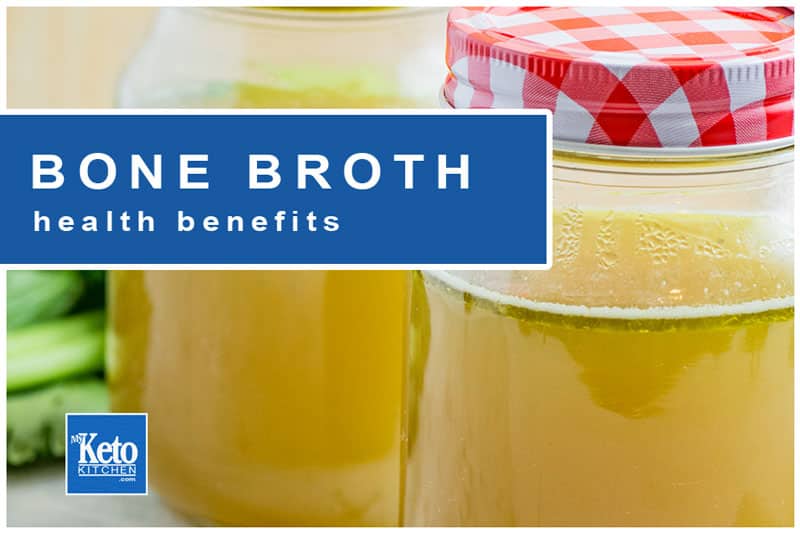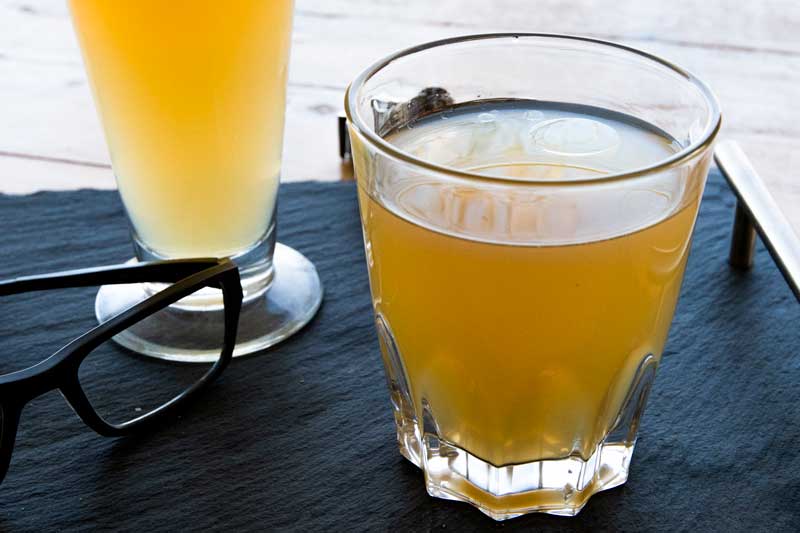
Bone broth has been a part of the human diet for almost as long as man has wandered the earth.
As hunter-gatherers, before the dawn of farming and industry, humans let nothing go to waste. That included consuming the salty, nutrient-dense bone broths they made from the bones left over from their catch.
There is documented evidence that our ancestors stored bones as a source of nutrition for the winter.
During these times when they could not hunt, they would break the saved bones and then stew them.
Stewing the bones would draw out the nutritious marrow, fats, and minerals to see them through the winter.
Whether through instinct or recognizing the feeling of well-being bone broth gave, its consumption was popular through the ages.
Popular, that is, until the industrial boom and the birth of mass-produced processed foods, “junk food.”
Is bone broth good for you?
As we touched on earlier, instinct is a powerful thing, and most species instinctively recognize what’s good for them through a sense of well-being. Broths have been used for centuries as remedies for colds and flu.
Bone broth is not only good for you, but it’s also one of the most nutrient-dense sources of essential minerals that you can get. Consuming bone broth has a lot of health benefits, both physically and mentally.
Not only that, but a well-prepared bone broth consists of no carbohydrates, preservatives, or chemical additives.
Can you drink bone broth on a keto diet?
As I just mentioned, real bone broth has no carbs for a start which is a good thing for a keto diet.
You can and should drink generous servings of bone broth on a keto diet. Bone broth helps prevent keto flu and is an excellent way to replenish essential electrolytes in the body.
On a keto diet, bone broth also helps retain lean mass (muscle) due to its collagen and amino acid content.
The collagen in bone broth will also give your skin elasticity as you lose weight and may help limit loose and saggy skin.
We make large batches of bone broth from lamb, beef and chicken bones which we freeze or refrigerate to have on hand.
A flask of bone broth in the morning is an excellent way to start the day for anyone on a ketogenic diet.
Bone Broth and Collagen
Collagen is a protein found in the connective tissues throughout the body. Collagen is also the protein that you will get from bone broth.
Collagen consists of 18 amino acids, with 8 of them being essential amino acids. Of most note are the high levels of Alanine, Glycine, Hydroxyproline, and Proline.
Collagen is in ligaments, tendons, nails, the skin and linings of the gut, and organs throughout the body.
Consuming collagen can help ease stomach upset as it lines and protects the walls of the gut.
For those on a keto diet, collagen is a superior protein than whey, casein and of course soy.
The collagen you get from homemade broths is as it was throughout the centuries, unlike hydrolyzed whey, casein, and soy powders, which are processed with many additives.
The only milk proteins (whey and casein) you should be getting on a keto diet should come from foods such as hard cheeses and full cream.
If I haven’t had the time to prepare a bone broth, I’ll start the day with good grass-fed collagen and MCT supplement, which affords me a similar edge.
What are the benefits of drinking bone broth?
- Bone Broth replenishes essential electrolytes. Sodium, potassium, calcium
- Bone Broth aids in healthy gut bacteria called the microbiome
- Bone Broth can elevate mood due to a healthy gut microbiome (yes, your gut talks to your brain)
- Bone Broth fights fatigue and lethargy
- Bone Broth has high levels of amino acids; alanine, glycine, hydroxyproline, and proline, essential building blocks for the body.
- Bone broth has been said to be anti-inflammatory and to help relieve arthritis and joint pain due to amino acids l-glutamine, cysteine, glycine, and histidine.
- Bone broth has been shown to aid weight loss by changing the ratio of Bacteriodetes to Firmicutes. Firmicutes cause an imbalance in the body’s ability to metabolize calories.
- Bone broth helps healthy teeth, bones, and nails through its collagen content.
- Bone broth has been used as a cold and flu remedy for centuries, and research suggests that it does indeed ease the symptoms of the common cold (chicken soup, anyone?)
- Bone broth works to regulate stomach acid and can alleviate many stomach conditions.
- The Collagen found in bone broth can help ease stomach upset by providing a protective lining over the gut walls.

Is Bone Broth the same as Stock?
Many people confuse stock with broth as they look similar and sometimes taste identical.
Bone broth should have a different thicker consistency than stock due to the amount of collagen and gelatin released from the bones.
Bone broth and stock are different. Bone broth may contain the same ingredients as stock. But bone broth is cooked for a much extended period and is somewhat thicker.
The thickness of bone broth is due to the gelatin and collagen that are extracted when the bones are cooked over a more extended period.
You can cook a good stock in a couple of hours. But a good bone broth takes 24 hours + to cook and extracts much more of the minerals and nutrients out of the bones.
Note: Chicken and fish bones do not need such a long time (10 to 12 hours should do nicely).
Uses for Bone Broth
- As a hot beverage
- Bone broth makes an excellent liquid ingredient in slow cooker recipes, stews, and soups.
- As an ingredient in sauces
- Bone broth as an electrolyte replacement before, during, and after events
- Bone broth as an elixir for colds and flu symptoms
- As a supplement during fast and keto induction
How To Make Your Bone Broth
If you’re looking for a good recipe, check out our Lamb and Herb Bone Broth recipe for cooking instructions and ingredients.
You will need the following:
- A large stock pot
- Beef, Lamb, or Chicken bones (for a few, serves 1 pound, up to 6 pounds for more)
- Add extra salt if you wish
- A teaspoon of Olive Oil
- Herbs and spices, perhaps, garlic, thyme, and onion, to taste
Common Mistakes When Cooking Bone Broth
We make mistakes when cooking all the time. Especially when you consider that we like to create original recipes.
Here are some of the mistakes we’ve made when making bone broth.
- Not boiling off impurities (especially when using beef bones). Boil (blanch) for 20 minutes before roasting.
- Not roasting the bones beforehand. Roasting improves the flavor of the broth. Roast them to their limit with a high oven for 40 minutes.
- If using too small of a pot, you must use a stock pot. The bigger the stock pot, the better, but only put enough water in to cover the bones.
- Putting too many additives into your broth. The only things we usually add to a bone broth are things that add to the smell of good (which enhances the taste). If you want to fill the broth with meats and vegetables, do that as a different dish like we did here with our delicious keto lamb shanks recipe. We added our broth to the shanks and other ingredients and cooked in a standard pressure cooker.
- Not cooking long enough. If you only simmer the bones for a few hours, all you’ll end up with is a watery stock. To draw all the nutrients from the bones (particularly beef and lamb), they should be cooked for 24 hours.
- Not refrigerating or freezing. When finished cooking your bone broth, remove the bones, strain it and then refrigerate asap. Better still, freeze it, as bone broth can breed bacteria.
Bone broth is a keto superfood that you should consume not just when beginning a ketogenic diet but all the time for its health benefits.




When you say to cook for 24 hours, you talk about using a stock pot, which I would consider on a stove top. Can this be done overnight in a slow cooker or for a shorter time in an Instapot?
Hi Sandy,
A slow cooker is also ideal to make bone broth. We wouldn’t recommend using an Instapot though, as it’s the low and slow nature of cooking bone broth that draws out all the nutrients. I hope that helps.
Can the bones be given to dogs afterward or does the long cooking time make the bones brittle?
Hi Rich, I couldn’t see any benefit for the dogs once they’ve been simmering for a day. They become very soft, and theres nothing in left in them. Hope that helps.
Matt